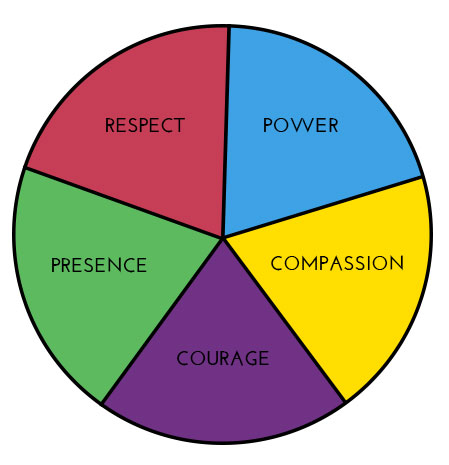What can teachers do to help prevent bullying?
Bullying, like any form of assault, is all about power – power over another, loss of personal power, power imbalances, and the abuse of power. The question of power and its use is therefore a key issue related to bullying prevention.

STRIVING FOR EMPOWERMENT
As adults and as teachers, we have more power than our students. As such, our daily interactions with students can serve as a model for the positive use of power. By carefully reflecting on the way we use our power as adults, we are more able to use it with integrity and transparency. Through this process, we increase the likelihood that our interactions with our students will foster their wellbeing and their healthy development.
This is known as facilitating students’ “empowerment”. Fundamentally, teachers facilitate students’ empowerment by respecting their basic human dignity, and by creating conditions enabling them to be “safe, strong and free”, while encouraging them and enabling them to respect others’ rights in this regard. On a practical level, day-to-day, teachers can do a great deal to facilitate students’ empowerment by talking honestly with them, cultivating respectful interactions with them and providing them with accurate and practical information.
We also need to support students in developing their capacity for thinking through problems and finding strategies for their resolution. Increasing students’ choices and options in daily life, providing them with opportunities to practise their problem-solving skills, will mean that they are better equipped to make positive decisions when they encounter difficulties. Strategies that increase students’ ability to make decisions and take action to protect themselves reduce their likelihood of being bullied.

BUILDING SELF-ESTEEM
Building students’ self-esteem is central to bullying prevention. Doing so allows them to see that they have important strengths and inner resources that they can call upon to resolve a bullying situation, or to get help when needed. This helps foster students’ positive and stable self-perception, which in turn has a real impact on reducing their vulnerability to being bullied or collaborating in this anti-social behaviour.
Developing students’ ability to recognize and accept their own and others’ strengths, differences and limitations leads to a greater capacity to engage in healthy relationships. Students who have a realistic perception of themselves as competent and fundamentally acceptable will not need to feel superior or more powerful than others in order to feel good. Their basic self-acceptance will not falter when they make a mistake, when they are unlucky or when they have interpersonal problems, even when they are emotionally shaken by life’s many challenges.
As teachers, we play a central role in helping our students develop a core belief in their own intrinsic self-worth. Each school day presents a multitude of opportunities to interact with students in a way that allows them to accept and respect themselves and others.

Everyday prevention
Teachers and other school staff may not fully realize that they are already implementing many effective bullying prevention strategies everyday. Many are simply tapping into their own experiences to act in ways that seem fair, appropriate and conducive to the development of a positive and inclusive classroom and school culture.
Bullying prevention is not an area reserved solely for “experts” in the field. The gradual entrenchment of a school culture that perpetuates bullying is a consequence of the words and actions of many people. The same is true of a school culture that contributes to preventing bullying. Essentially, a school’s culture is the result of people’s daily choices within that context, including the choices of students, staff, parents and guardians. School culture takes root moment to moment, in each word we speak and in our many small actions and gestures toward those around us.
TEACHING FOR EMPOWERMENT
- Help students learn to express themselves, to connect with and constructively express a range of emotions.
- Listen very carefully when students talk to us and take their experiences and feelings seriously. Make sure they feel seen and heard.
- Acknowledge that abuse and violence do exist, and that they are not acceptable.
- Focus on what our students can do, rather than on what they can’t do (or should do, or shouldn’t do);
- Recognize and nurture our students’ talents, skills and abilities.
- Believe in the concept of peer support, and encourage our students’ ability to champion others when needed.
- Foster a classroom and school environment where kindness and compassion for everyone are considered extremely important values.
- Discuss the issue of rights and responsibility (for example, the right to feel “safe, strong and free”) – their own, and each others’.
- Provide our students with plenty of opportunities to make decisions, be in charge, take initiative and share responsibility.
- Foster healthy communication and conflict resolution strategies, when appropriate. (For more information about the difference between bullying and conflict, see Module 2.)
- Create and nurture positive relationships, links and partnerships whenever possible with groups and individuals working in the community on issues related to bullying prevention and healthy communities.
